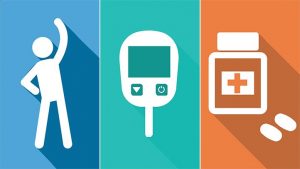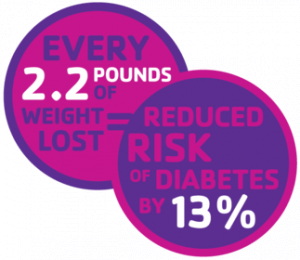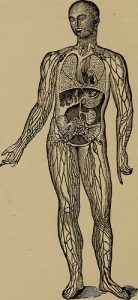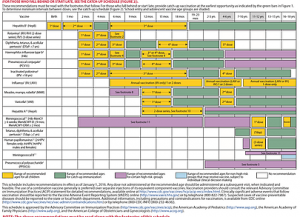In the United States, the healthcare and social costs of alcohol use disorders account for an estimated value of $191.6 billion in total annual costs. At the individual level, direct health care and other costs are very high leaving affected persons impoverished (Barry, 2016). Alcohol use disorder has major adverse consequences, such as those associated with impaired driving, communicable disease transmission, educational attainment and direct risks to lives and property through crime and violence. In the United States, less than 10% of affected individuals with alcohol use disorders receive treatment especially as stigma and stigmatization are still strong factors (Barry et al., 2016).
Age of first drinking has also been associated with alcohol use disorders and mental health disorders. There is a link between the origin or cause of Alcohol use disorder with genetic and environmental factors. There is also the coexistence of Alcohol use disorder and Mental health disorders such as Bipolar disorder, Schizophrenia and Anti-Social Personality disorder (Newton-Howes, 2016).
In terms of family disruptions, Alcohol use disorder (AUD) and divorce are relatively common and are associated with one another. Divorced individuals consume more alcohol and in more harmful patterns than married individuals. Divorce and AUD were also positively correlated strongly in the population of study. According to Salvatore et al., individuals affected by Alcoholism /Alcohol use disorder were heavy Alcohol consumers who could no longer function appropriately at home and at work, which is similar to what the video spoke about and is in support of (Salvatore et al., 2017).
Video 1: https://www.youtube.com/watch?v=mfMBCBLVCvY
Kati Morton, a Marriage/Family therapist spoke on Alcoholism and defined it as intently consuming alcohol in large amounts and over a long period of time with a strong craving/desire. She also defined it as a recurrent alcohol use that results in failure to fulfil one’s role in the family, school and at work. Alcohol abuse results in withdrawal symptoms especially when alcohol is no longer available for consumption. Withdrawal symptoms include restlessness, shakiness, sweating, loss of appetite, nausea, vomiting, agitation, irritability, anxiety, fast heart rate, tremor, disorientation, headache, insomnia, depression, seizures. Increased use of alcohol can lead to complete organ failure.
Video 2: https://www.youtube.com/watch?v=2zADTxr5QDE
Lisa Frederiksen referred to Alcoholism as a brain disease and stated that it is not alcohol abuse /addiction. She stated that just like diseases change body cells in a negative way, so does Alcoholism affect many organs of the body, especially the brain. She went further to explain that it takes about an hour for the liver to metabolize a drink of alcohol and so when more than one drink is consumed, the rest sits in other parts of the body like the brain, waiting to be metabolized, thereby leading to the suppression of normal brain functions. Alcoholism leads to fight with family members as they complain about the drinking issue. The drinking issue leads to missing work, school having unwanted/unprotected sex, fist fights, lying, stealing, impaired driving. She also said that alcohol abusers are not necessarily alcoholics and that alcohol abuse can eventually progress to alcoholism if the drinking behavior is not checked or stopped.
Video 3: https://www.youtube.com/watch?v=NXhB8Vi9An4
In this video, Todd Grande described alcoholism as a problematic pattern of alcohol use leading to a clinically significant impairment or distress. He stated the statistics of alcohol use disorder as 4.6% prevalence among ages 12-17 year old, 8.5% for ages 18 & older, 12.4% for adult males, 4.9% for adult females and 1.5% for age 65 years and older. Alcohol abuse can be as a result of alcohol availability, culture, stress levels, genetic factors, peer influence. 3.8% of all deaths all over the world are attributable to alcohol. 80% of adults consume alcohol regularly and 3.6% of the world population has a current Alcohol use disorder. The prevalence is lower in the Africa region, while it is higher in the North, South and Central America and the Eastern Europe region.
Recommendations
Going by the account of the 3 videos, they all corroborate one another and their explanation on excessive alcohol consumption all tends to the fact that it is harmful for the body and the society at large. In comparison, I find that the media representation of Alcohol use disorder and the professional/scientific information or report do not oppose each other but they are closely related. The media suggested that alcohol abuse has led to disruption in lives and families. And that it is a brain disease and associated it with Psychiatric illnesses. This was also the position of the professional information. One can rely on the information given by the media on this topic as they are proven to be true according to the information provided in the peer reviewed articles. But I would still say that any information derived from the media should still be crosschecked with professional information in order to be safe and to maintain a correct position.
References
Barry, C. L., Epstein, A. J., Fiellin, D. A., Fraenkel, L., & Busch, S. H. (2016). Estimating demand for primary care-based treatment for substance and alcohol use disorders. Addiction, 111(8), 1376-1384.
Newton-Howes, G., & Boden, J. M. (2016). Relation between age of first drinking and mental health and alcohol and drug disorders in adulthood: Evidence from a 35-year cohort study. Addiction, 111(4), 637-644.
Salvatore, J. E., Larsson Lönn, S., Sundquist, J., Lichtenstein, P., Sundquist, K., & Kendler, K. S. (2017). Alcohol use disorder and divorce: Evidence for a genetic correlation in a population-based Swedish sample. Addiction, 112(4), 586-593.








